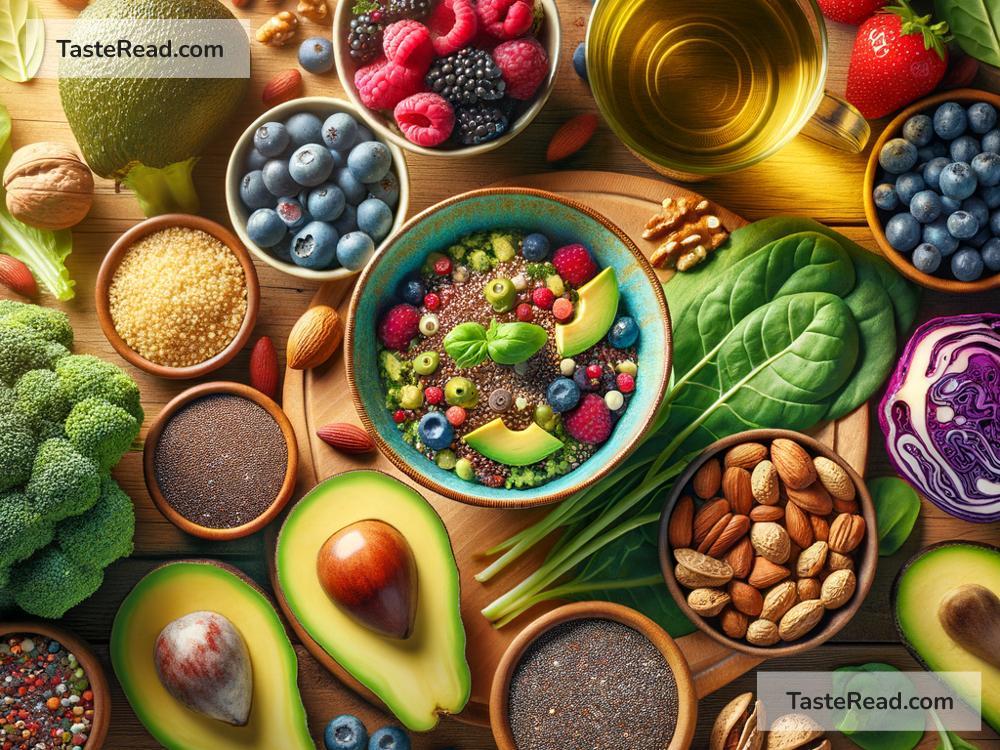Foods That Help Reduce Postprandial Glucose: A Simple Guide
After you eat a meal, your blood sugar levels naturally rise. This is called postprandial glucose. For people managing diabetes or prediabetes, controlling postprandial glucose levels is important for overall health. Even if you don’t have blood sugar issues, keeping your glucose levels steady can help you stay energized and reduce the risk of long-term health problems.
The good news is that the foods you choose to eat—and how you combine them—can make a huge difference in your post-meal blood sugar. In this article, we’ll explore simple, easy-to-understand ways to keep your glucose levels in check with helpful foods.
What Is Postprandial Glucose?
When you eat, your body breaks down the carbohydrates in food into glucose (sugar), which is absorbed into your bloodstream. Your pancreas then releases insulin, a hormone that helps move glucose into your cells to be used for energy. However, if too much sugar enters your bloodstream because of a high-carb or sugary meal, your blood glucose can spike.
Frequent glucose spikes, especially after meals, can lead to health issues over time such as insulin resistance, Type 2 diabetes, heart disease, and fatigue. That’s why controlling your postprandial glucose is important, and the right foods can help you do just that.
Foods That Help Reduce Postprandial Glucose
Here are some amazing foods to incorporate into your meals to help stabilize blood sugar after eating:
1. Non-Starchy Vegetables
Non-starchy vegetables are excellent for managing post-meal blood sugar because they are high in fiber, low in calories, and don’t contribute to glucose spikes. Fiber slows digestion, meaning that glucose enters your bloodstream gradually instead of all at once. Some great options include:
– Broccoli
– Spinach
– Green beans
– Zucchini
– Bell peppers
Try to fill half your plate with non-starchy veggies at meals to help keep blood sugar steady.
2. Whole Grains
Unlike refined grains like white bread and rice, whole grains contain fiber and nutrients that help slow down digestion. When you eat whole grains, your blood sugar doesn’t spike as quickly. Examples of whole grains include:
– Quinoa
– Brown rice
– Whole wheat bread
– Oats
– Barley
Make sure to choose whole, unprocessed grains, and pair them with protein or healthy fats for even better glucose control.
3. Legumes (Beans, Lentils, and Peas)
Legumes are packed with complex carbohydrates, fiber, and protein, making them a great choice for managing glucose levels. The fiber in legumes slows digestion, and the protein helps your body process the meal more effectively. Options include:
– Black beans
– Chickpeas
– Lentils
– Kidney beans
Adding legumes to salads, soups, or grain bowls is a simple way to stabilize your blood sugar after meals.
4. Healthy Fats
Healthy fats don’t cause blood sugar spikes and can actually help slow the absorption of carbohydrates when paired in a meal. Some examples of healthy fats include:
– Avocados
– Nuts (almonds, walnuts, etc.)
– Seeds (chia seeds, flaxseeds)
– Olive oil
For instance, adding avocado slices to your toast or olive oil to your salad can reduce the likelihood of a glucose spike.
5. Lean Proteins
Proteins don’t convert to glucose the way carbohydrates do, which means they don’t cause large blood sugar increases. Pairing lean proteins with fiber-rich carbs can help ensure a steady release of glucose. Some good protein options include:
– Chicken breast
– Turkey
– Eggs
– Fish (like salmon and tuna)
– Plant-based proteins like tofu
Eating a protein-rich portion alongside carbs helps your body digest the meal more gradually.
6. Foods Rich in Soluble Fiber
Soluble fiber dissolves in water and slows digestion, helping your body process sugars from food more slowly. Soluble fiber-rich foods include:
– Oats
– Apples
– Citrus fruits (like oranges and grapefruits)
– Carrots
– Beans
Including these foods in your meals or snacks can reduce postprandial glucose spikes effectively.
7. Vinegar
Studies have shown that vinegar, especially apple cider vinegar, can help improve insulin sensitivity and lower post-meal blood sugar levels. Adding a splash of vinegar to your salad dressing, or drinking a diluted vinegar solution before meals, can help stabilize glucose. Just be sure to consult your doctor before trying this regularly.
Tips for Combining Foods
The way you combine foods within a meal affects your blood sugar response. Here are some practical tips:
– Include fiber, protein, and healthy fats in every meal. For example, a salad with leafy greens (fiber), grilled chicken (protein), and olive oil dressing (healthy fats) is great for stabilizing glucose.
– Avoid eating large amounts of refined carbs on their own; pair them with proteins and fats to slow digestion.
– Start meals with vegetables or a fiber-rich food to pave the way for steady glucose levels.
– Eat smaller portions of carbs to reduce glucose spikes.
The Takeaway
Certain foods can play an important role in reducing postprandial glucose levels. By prioritizing non-starchy vegetables, whole grains, legumes, healthy fats, lean proteins, and fiber-rich choices, you’ll help keep your blood sugar steady after meals. Combining these foods wisely is key to maintaining good energy levels and long-term health.
Eating to manage blood sugar doesn’t mean deprivation—it’s about balance and mindfulness. With small but smart changes to your meals, you can take control of your glucose levels and feel your best every day.


